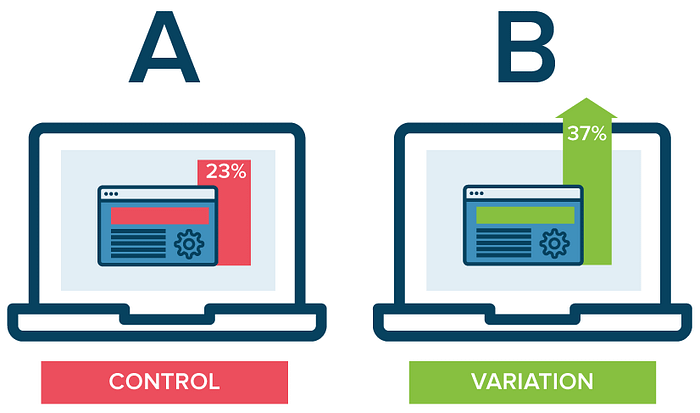Landing Page Optimization: Tools & Tips

In June 2017, I joined the Google Team France as a Digital Coach for 2 events: Le salon des entrepreneurs in Lyon and Vivatechnology in Paris. I spent 5 fantastic days meeting entrepreneurs, startups and like-minded people. My role was to dive deep into their digital strategy to show them how to master it using Google Tools as well as giving them my insights.
When I do a coaching session, I always start by asking the professional to show me his website. It helps me to get an idea of what he is doing as well as to provide him with instant feedback, the right mindset and share good processes.
Here is a list of the tips and tools I shared with them to improve their home/landing page:
1) Make it Clear and Easy
Imagine that you are looking to buy a couch or a bed. You decide to go to a brick & mortar shop to directly test the product. You enter the shop, which is a large space full of furniture everywhere. Obviously, you have a chance to find what you are looking for, but how much time are you going to spend? Maybe you will ask a vendor to help you, maybe you will struggle and leave if the process is too annoying. Or you can go to Ikea, where you just have to follow the flow.
Always put yourself in your user’s shoes. Be single-minded, don’t give them the time to get lost.
“Simple can be harder than complex: You have to work hard to get your thinking clean to make it simple. But it’s worth it in the end because once you get there, you can move mountains.” — Steve Jobs
When your visitors land on your website, here are the 3 key pieces of information they should see without having to scroll:
1) A headline, which explains the main benefits you are providing (not your solution but the benefits of your solution). You can add a line under the headline to present more details.
2) A call to action. When visitors land on your website, what do you want them to do? Add a button with the most effective wording to reach this goal.
3) A step by step process of the user experience. It will help your visitors know what to expect and avoid useless friction.

Keeping this in mind, all your visitors will be able to understand the benefits you provide in less than ten seconds, as well as how they can access it (call to action) and what will be their user experience if they choose your solution. Some of your visitors will be immediately convinced and will click on your call to action (well done).
Concerning the others, they will continue to scroll. So what should you add?
Create a list of sales arguments and order them from the most important to the least important depending on your target. At the end of each argument, add the same call to action. No one should have to scroll back to access your solution. Finally, don’t forget to add two testimonials and the logos of your partners at the bottom in order to improve your credibility.
2) Think Conversion, Drive Optimization
a) Engage with Them
Picture that you are the owner of a brick & mortar shop. In a single day, a hundred people enter your shop but by the end of the day, no one has bought anything. How frustrating would that be for you? This won’t happen however, because you will engage with them, identify their needs and share your expertise. This is exactly the same case with your website. It shouldn’t only be a showcase of what you do.
In the conversion process, there are two majors factors: Timing and Budget. Some of your visitors will like what you offer though it could be too early for them to use your solution or they don’t have the budget for it yet. However, in another three months they could, but they will definitely have forgot you in that time. Today, our daily journey on the internet is full of information, so it is difficult to remember every discovery you make. This is where you come into the picture by providing your potential customers the opportunity to leave their email addresses (at least twice) in exchange for something valuable.
Please don’t offer them the opportunity to subscribe to your newsletter: What is the value behind it? Instead, think about advertising. Let’s take the example of Meetic: Find love for 30€/month. What is 30€ in comparison of finding love? The Perceived value should always be higher than the Real value.
Come back to the problem you are solving. The best solution is the paid solution you provide, of course, but you can alternately offer a PDF or a drip campaign email with articles that will help in solving one of their main problems. If the perceived value is attractive and polished, you will be able to get their email address.
b) Give Before Asking
Now that you have their email address, you have the chance to demonstrate your expertise. You need to create trust through a virtual relationship by sending an email every two to three weeks. It’s all about quality, not quantity. Try to help them solve their problems. When they are ready for your solution and have the budget necessary, there is a better chance they will use yours, as they now trust you and your expertise.
Put the seeds in the ground = Get an email
Water it = Send a guide
Water it = Send an article
Water it = …
Collect the fruit = Get a conversion

c) Always Optimize
You should have two differents Call to Action on your landing page. One to reach your main goal and one in order to get their email address. It’s time to use Google Analytics to set goals and track conversions. You’ll have goal 1 (Buy now) and goal 2 (Subscribe with their email address). After a couple of days or weeks, you’ll be able to track a conversion rate. If a hundred people land on your page and five buy your products, you’ll have a 5% conversion rate on your Goal 1.
Please don’t make the same mistake as 80% of the entrepreneurs I’ve met. Don’t pay a Digital Agency thousands of euros to create a website, and consider your job done. Even if your main activity is offline, don’t view your website as a showcase of what you do, but more as an acquisition channel to leverage further leads for your business.
To improve your conversions rate, you can experiment with A/B Testing with Optimize from Google. This free tool will help you to set up an A/B testing campaign in five minutes and track which variant is the most efficient.
A/B Testing Reminder:
- You have your landing page with a call to action in red, which gives you a conversion rate of 5%.
- You create a variant of this landing page by changing the color of your call to action from red to green.
- 50% of your traffic will go to your landing page and 50% to your variant.
- After a couple of weeks (depending on the traffic you get), you’ll be able to decide which one performs better.

If you can improve your conversion rate from 5% to 20%, each time you’ll get 1000 targeted visitors, you’ll convert 200 people instead of 50. Simple Maths, so plug your leaks before you work on Acquisition.
3) Tips & Tools
- Squarespace is a great platform for creating an esthetic and clear website on your own. If you don’t require many features, Google My Business can provide a one-page website automatically for free.
- Google Analytics is perfect for measuring and analyzing the traffic on your website. Try to spend a minimum of fifteen minutes a day on this tool to get the most use out of it. Measure, Analyze, Optimise.
- Mailchimp aims you to build an email subscriber list as well as set up drip email campaigns.
- Campaign URL Builder assists in creating personalized links. It will help you get an accurate idea of the source of your traffic through Google Analytics.
- Optimize allows you to create an A/B test Campaign. It will help you optimize conversion rates on your website.
- Chi-Squared Test calculates if your results from an A/B test shows a significant difference, allowing you to make an informed decision before making a change.
- Google Data Studio displays an overview of your data from Google Analytics and your Spreadsheets.
If you don’t measure it, you can’t improve it!
-Pierre Guilbaud, Growth Hacker & Startup Manager at NUMA Bengaluru
Recent Posts
- How we assisted a prominent jewellery brand in India to enhance customer experience by streamlining billing processes and reducing turnaround time.
- How we developed an acceleration program involving internal teams for India’s largest food and beverage company.
- How we supported a multinational energy and petroleum company to promote a culture of customer centricity across various functions.
- How we empowered high-potential executives at a Swiss manufacturer of escalators, moving walkways, and elevators to leverage design thinking methodologies in crafting innovative products and services.
- How we guided Indian employees of an American pharmaceutical company to adopt the practice of identifying precise problem statements before delving into solution mode.